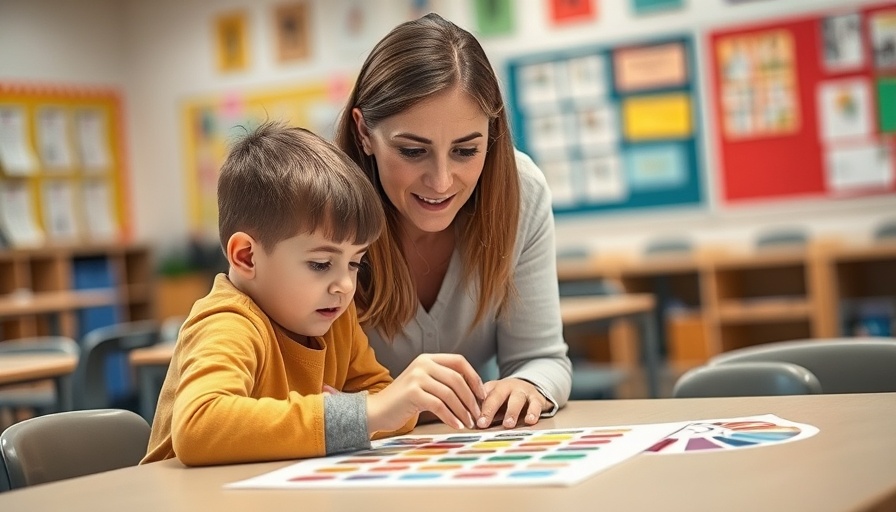
Understanding Autism and Color Recognition
For parents of children on the autism spectrum, navigating the world of education can feel like a daunting task. One crucial skill to explore is color recognition, which can significantly aid communication and social interaction. In the video titled How to Teach Color Identification to Autistic Kids at Home?, Rajni Singh provides a step-by-step guide to teaching colors effectively. But why is teaching colors so essential?
In the video titled How to Teach Color Identification to Autistic Kids at Home?, the discussion dives into practical techniques for teaching colors, exploring key insights that sparked deeper analysis on our end.
Color identification enhances a child's ability to describe their surroundings, engage in conversations, and express their preferences. These skills are vital for fostering independence and confidence in children who may struggle with social cues. By utilizing simple yet effective teaching methods, parents can create enriching learning environments at home.
Step-by-Step Techniques for Teaching Colors
One of the first takeaways from Singh's tutorial is the emphasis on hands-on learning. To begin, start with a single color, preferably one that is bright and easily distinguishable, like red. By cutting white strips of paper and showing the child various red objects, such as flowers or cups, you begin the association process. This method engages their visual senses, promotes tactile interaction, and helps reinforce the learning experience.
As your child becomes familiar with the selected color, you can introduce additional items in that color. The repetition of asking the child to “touch the red flower” reinforces their understanding as they connect physical objects with colors. Over time, you can gradually introduce new colors, such as pink, green, or blue, following the same interactive model while ensuring a consistent approach.
Engaging Learning Environments at Home
Creating an engaging learning environment is another crucial element in teaching color recognition. Given children on the autism spectrum often thrive in structured settings, consider setting up a dedicated space for color activities. Use bright visuals, like colorful posters or interactive tools that make learning fun.
Utilizing everyday items can also enhance engagement. For instance, organizing a treasure hunt where the child finds and identifies objects of a specific color can merge fun with learning. This interactive play helps children apply their knowledge in real-world contexts—imparting skills that extend beyond just naming colors.
Incorporating Technology in Learning
In today's digital age, another avenue to explore is tech-assisted learning. Various educational apps are designed specifically for children on the autism spectrum, offering dynamic ways to interact with colors through games and visual aids. Many apps use interactive elements, allowing children to practice color recognition in a playful and engaging format. Apps not only supplement traditional teaching but can also sustain interest and excitement in learning.
Community and Parental Support
Finally, an essential factor in teaching autistic children is the support of a caring community. Engaging with groups focused on parenting children with autism can provide valuable insights and foster a sense of belonging. There are various forums and local meet-ups where parents can share experiences, techniques, and advice on educational methodologies. Social connections reinforce the message that no one is alone on this journey, and collective knowledge can enhance individual teaching outcomes.
In conclusion, learning colors is a foundational skill that offers numerous benefits for children on the autism spectrum. By employing simple yet effective methods, incorporating technology, and fostering a supportive environment, parents can make learning fun and impactful. Color identification is not merely an educational hurdle; it is a stepping stone toward greater independence and self-expression.
As a closing thought, if you’re eager to explore more about autism and effective teaching strategies, consider joining our upcoming live sessions where we share additional insights and techniques!
 Add Row
Add Row 

 Add
Add 


Write A Comment